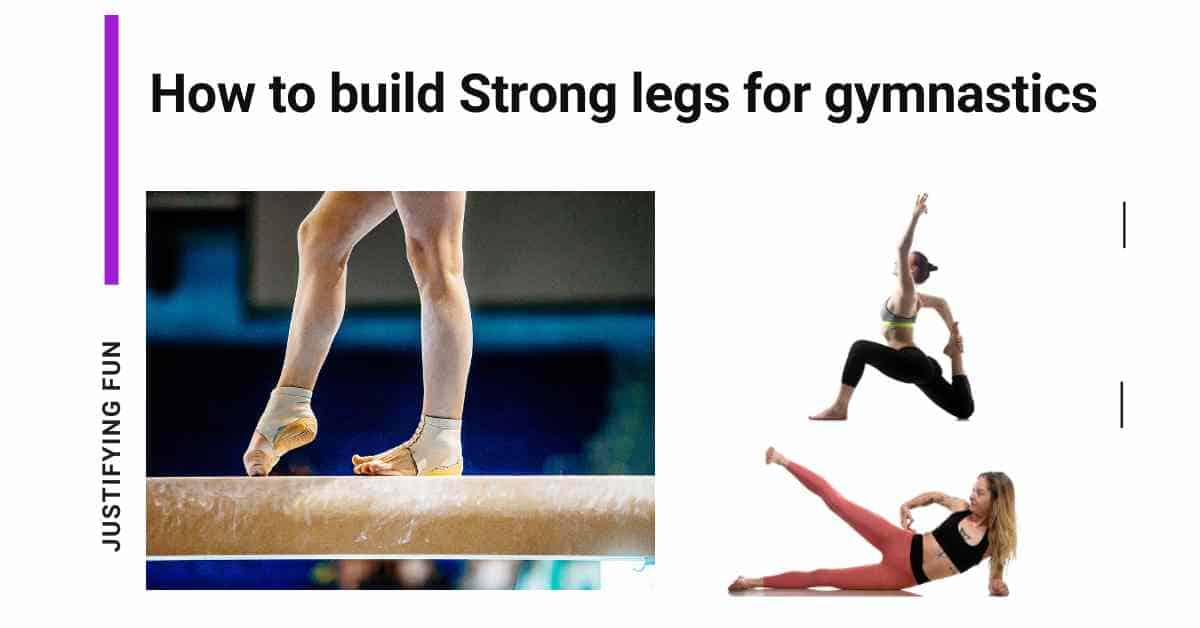
As you know, having strong legs is crucial for gymnasts. From executing powerful tumbling passes to sticking landings, our legs are the foundation for nearly every skill in gymnastics. In this guide, I’ll walk you through the essentials of building strong gymnast legs, share some effective exercises, and provide tips for injury prevention and recovery. Let’s get started!
The Anatomy of Gymnast Legs
Before diving into exercises and techniques, let’s first understand the key muscle groups in gymnast legs:
Major muscle groups:
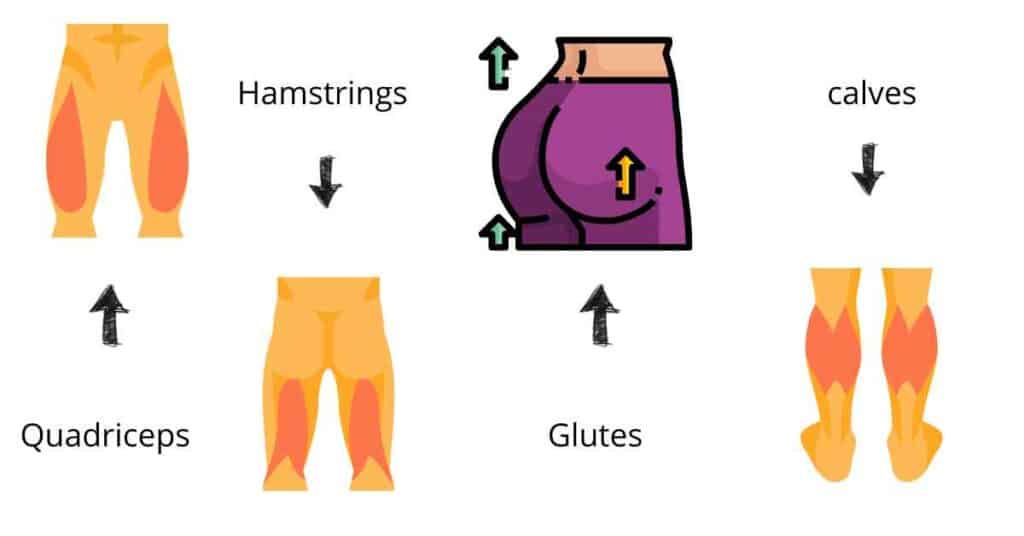
Quadriceps: These muscles at the front of your thigh help extend your knee and provide explosive power for jumps. Quadriceps play a significant role in various gymnastics skills, as they are responsible for extending the knee and providing power and stability during movements. Some gymnastics skills that use the quadriceps include:
- Tumbling: Quadriceps are crucial for generating the explosive power needed for flips, handsprings, and other tumbling skills. They help drive the legs during takeoff and assist in controlling the landing.
- Jumps and leaps: Skills like split leaps, straddle jumps, and tuck jumps require strong quadriceps to propel the gymnast into the air and achieve the desired height and form.
- Vault: The quadriceps are essential in the run-up, takeoff, and landing during vault exercises. They provide the power needed to push off the springboard and help stabilize the landing.
- Balance beam: Quadriceps contribute to stability and control while performing various skills on the balance beam, such as leaps, jumps, and turns. They also help maintain proper alignment and balance during static poses and transitions.
- Bars (uneven and parallel): While upper body strength is the primary focus in bar exercises, quadriceps still play a role in maintaining body tension and control during various swinging, releasing, and transitioning movements.
Hamstrings: Located at the back of your thigh, hamstrings help with knee flexion and hip extension. Hamstrings play a vital role in many gymnastics skills as they contribute to hip extension, knee flexion, and overall stability. Some gymnastics skills that use the hamstrings include:
- Tumbling: Hamstrings help control and stabilize the body during flips, handsprings, and other tumbling skills. They assist in maintaining proper form and contribute to the power necessary for takeoff and landing.
- Jumps and leaps: During split leaps, straddle jumps, and other jumps, hamstrings work together with quadriceps to generate power, maintain form, and control landings.
- Vault: In the run-up, takeoff, and landing phases of vault exercises, hamstrings work in conjunction with other leg muscles to provide the necessary power and stability.
- Balance beam: Hamstrings contribute to balance and control on the beam, aiding in various skills like leaps, jumps, turns, and arabesques. They also help maintain proper alignment and stability during static poses and transitions.
- Bars (uneven and parallel): Although the focus in bar exercises is mainly on upper body strength, hamstrings still play a role in maintaining body tension, control, and stability during various swinging, releasing, and transitioning movements.
Glutes: Your powerhouse, the glutes help stabilize your hips and support your body during leaps and jumps. The muscles in the buttocks, are essential for hip extension, stability, and power generation in gymnastics. They play a significant role in several gymnastics skills, including:
- Tumbling: Glutes contribute to the explosive power needed for flips, handsprings, and other tumbling skills. They help drive the legs during takeoff, maintain proper form, and assist in controlling the landing.
- Jumps and leaps: Skills like split leaps, straddle jumps, and tuck jumps require strong glutes to propel the gymnast into the air, achieve the desired height, and maintain form.
- Vault: Glutes play a crucial role in the run-up, takeoff, and landing during vault exercises. They provide the power needed to push off the springboard, support the body during the flight phase, and help stabilize the landing.
- Balance beam: Glutes contribute to stability and control while performing various skills on the balance beam, such as leaps, jumps, turns, and arabesques. They also help maintain proper alignment and balance during static poses and transitions.
- Bars (uneven and parallel): While the focus in bar exercises is predominantly on upper body strength, glutes are essential for maintaining body tension, control, and stability during various swinging, releasing, and transitioning movements.
Calves: These lower leg muscles are essential for pushing off the ground during takeoff and for controlling landings. The muscles located at the back of the lower leg, play an essential role in gymnastics by providing stability, balance, and power during various skills. Some gymnastics skills that use the calves include:
- Tumbling: Calves are crucial for generating the explosive power needed for flips, handsprings, and other tumbling skills. They help push off the ground during takeoff, maintain proper form, and assist in controlling the landing.
- Jumps and leaps: Skills like split leaps, straddle jumps, and tuck jumps require strong calves to propel the gymnast into the air, achieve the desired height, and maintain form.
- Vault: In the run-up, takeoff, and landing phases of vault exercises, calves work in conjunction with other leg muscles to provide the necessary power and stability.
- Balance beam: Calves contribute to balance and control on the beam, aiding in various skills like leaps, jumps, turns, and arabesques. They also help maintain proper alignment and stability during static poses and transitions.
- Bars (uneven and parallel): Although the focus in bar exercises is mainly on upper body strength, calves still play a role in maintaining body tension, control, and stability during various swinging, releasing, and transitioning movements.
Supporting muscle groups:
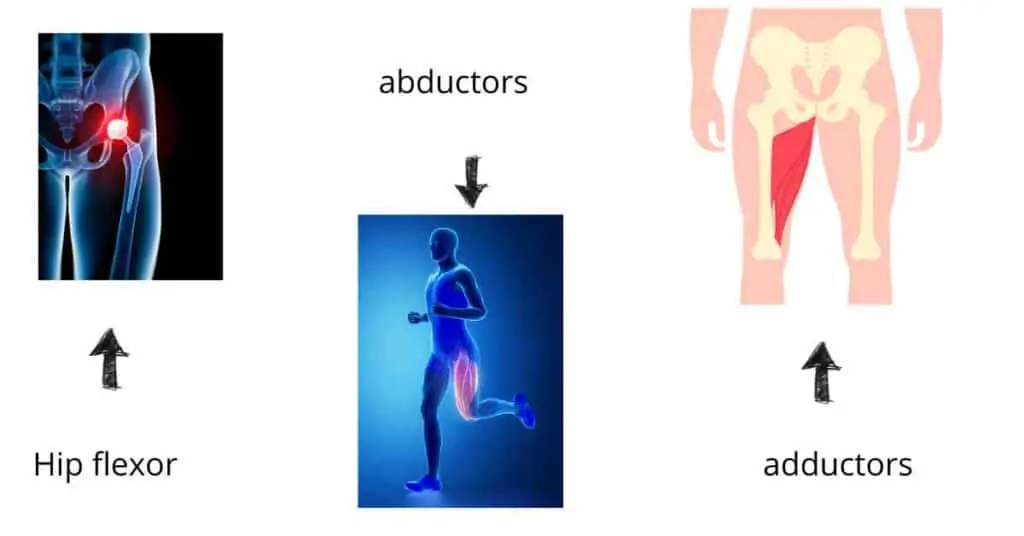
Hip flexors: These muscles help with hip flexion, which is crucial for high leg lifts and kicks.
Adductors: The inner thigh muscles play a significant role in maintaining balance and control during skills.
Abductors: Found on the outer thigh, these muscles stabilize the hips and help with side-to-side movements.
Strengthening exercises for a gymnasts legs
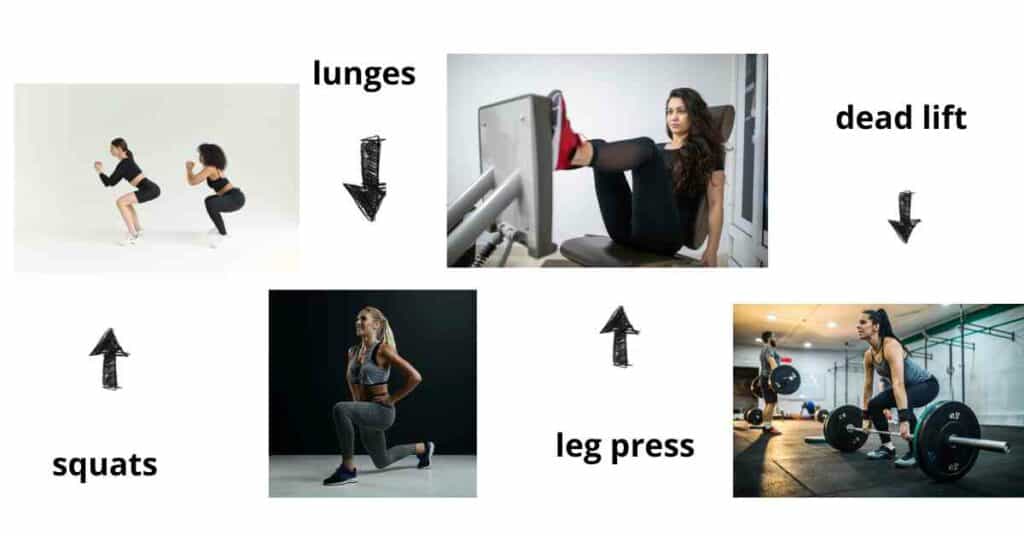
Now that we’re familiar with the muscle groups, let’s explore some effective exercises to build strong gymnast legs:
Lower body strength training:
Squats: A classic exercise that targets your quads, hamstrings, and glutes. Try variations like single-leg squats for an extra challenge.
Lunges: Great for working the entire lower body, lunges can be done in different directions to engage various muscles.
Deadlifts: This compound movement strengthens your hamstrings, glutes, and lower back, providing stability during landings.
Leg presses: Using a leg press machine can help isolate and strengthen your quads and glutes.
Plyometric exercises:
Box jumps: Jumping onto a box or platform increases your explosive power and enhances your takeoff.
Depth jumps: Stepping off a box and immediately jumping as high as possible helps improve your reaction time and overall power.
Tuck jumps: These jumps focus on lifting your knees towards your chest, mimicking many gymnastics skills.
Single-leg hops: Develop balance and leg strength by hopping on one leg while maintaining proper form.
Balance and stability exercises:
Single-leg stance: Stand on one leg with your eyes closed to challenge your balance and engage your stabilizer muscles.
Bosu ball exercises: Perform squats or lunges on a Bosu ball to improve balance and engage your core.
Yoga poses for gymnasts: Incorporate poses like Tree, Warrior III, and Half Moon to improve stability and flexibility.
Flexibility and mobility exercises:
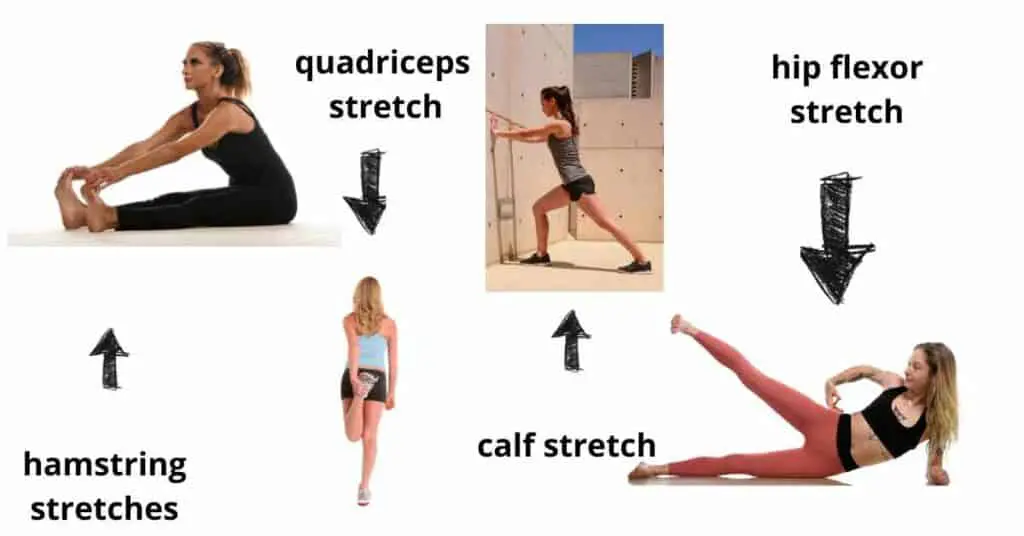
Hamstring stretches: Stretching your hamstrings can help prevent injuries and improve your leaps and jumps.
Quadriceps stretches: Keep your quads flexible to maintain proper form and prevent muscle imbalances.
Calf stretches: Don’t neglect your calves—keeping them limber will help avoid strains and tightness.
Hip flexor stretches: Maintaining hip flexor flexibility is essential for high leg lifts and splits.
Tips for Injury Prevention and Recovery
Proper warm-up and cool-down: Always warm up before training and cool down after to increase blood flow and reduce the risk of injury. Dynamic stretches and light cardio are great warm-up options, while static stretches and foam rolling are perfect for cooling down.
Adequate rest and recovery: Give your muscles time to recover by scheduling rest days and getting enough sleep. This helps prevent overtraining and reduces the risk of injury.
The role of nutrition in muscle recovery: Fuel your body with a balanced diet, focusing on lean proteins, complex carbs, healthy fats, and plenty of fruits and veggies. Staying hydrated is also crucial for optimal performance and recovery.
Importance of cross-training: Incorporate activities like swimming, cycling, or Pilates into your routine to work different muscle groups and improve overall fitness.
Frequently Asked Questions
Q: How often should gymnasts train their legs?
A: Aim for 2-3 leg training sessions per week, allowing adequate rest between workouts for recovery. Listen to your body and adjust your training schedule accordingly.
Q: What is the best way to build leg strength for gymnastics?
A: A combination of lower body strength training, plyometrics, balance and stability exercises, and flexibility work will yield the best results. Tailor your training to your specific goals and weaknesses.
Q: How can gymnasts improve their leg flexibility?
A: Consistently incorporate static and dynamic stretches into your warm-up and cool-down routines. Yoga and Pilates are also excellent for improving flexibility.
Q: Are there any specific exercises to improve jump height and power?
A: Plyometric exercises, such as box jumps, depth jumps, and tuck jumps, can significantly increase your jump height and power. Additionally, strengthening your quads, hamstrings, glutes, and calves will contribute to improved jumping ability.
Expert Advice and Insights
Listen to Interviews with top gymnasts and coaches: Seek out advice and insights from experienced gymnasts and coaches to learn from their expertise.
Common mistakes and how to avoid them: Be mindful of your form and technique to prevent injuries and ensure you’re targeting the right muscles.
Real-life success stories: Learn from other gymnasts who have successfully built strong gymnast legs and apply their strategies to your own training.
Conclusion
Building strong gymnast legs requires dedication, consistency, and a well-rounded approach to training. By focusing on strength, power, balance, and flexibility, you’ll lay the foundation for better gymnastics performance and reduced injury risk. Stay committed to your leg training, and you’ll see the positive impact on your skills and overall success in the sport.
